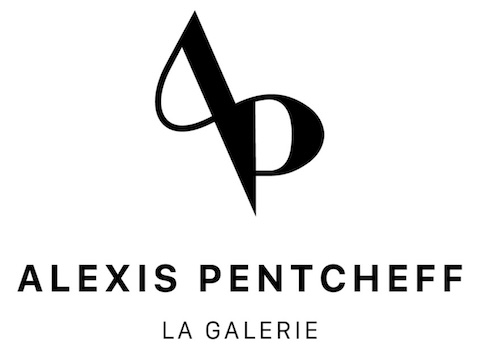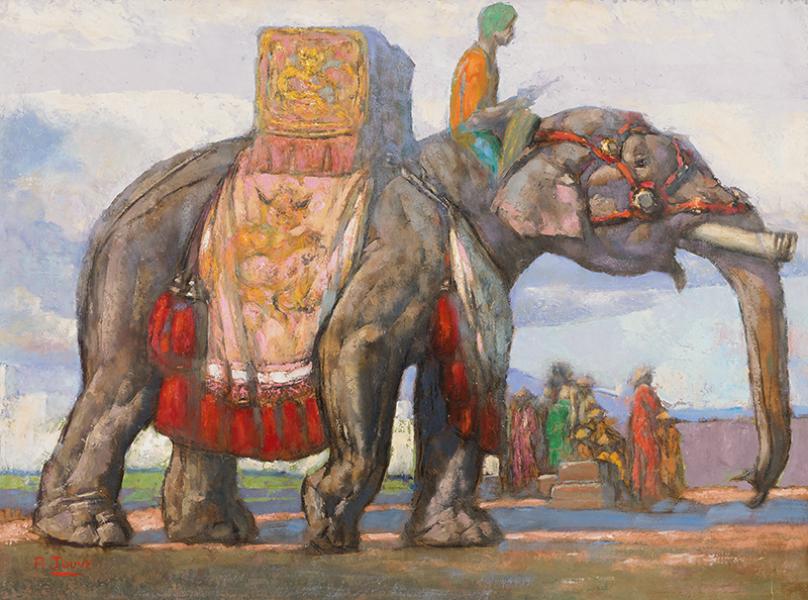Éléphant caparaçonné, c.1923
Oil on paper laid down on cardboard, signed lower left.
67 x 90 cm
Provenance:
Private collection, France
History:
Awarded the scholarship of the General Government of Indochina in 1921, Paul Jouve undertook the following year an extended eleven-month journey to the Far East. He left France at the beginning of September 1922 and returned in July 1923.
This voyage, which would leave a lasting mark on his work, led him through Ceylon, Annam, French Indochina, and Angkor. Jouve then traveled north to Tonkin and the city of Yunnan in the Chinese Empire. He spent a month in Hué, the imperial city, before crossing Annam again, stopping in the British Indies of the South and once more in Ceylon, before returning to France.
This painting depicts a caparisoned elephant with its mahout, in the city of Hué.
Exhibitions:
Salon des Artistes Français, Paris, 1924, Section of the Société Coloniale des Artistes Français, Grand Palais, Paris, no. 183.
Paul Jouve Exhibition, Galerie Haussmann, May 23 – June 20, 1925, exhibited under no. 42.
Literature:
Félix Marcilhac, Paul Jouve, Éditions de l’Amateur, Paris, 2005, reproduced in color p.149.
Certificate of authenticity issued by Mr. Dominique Suisse.
In this painting executed during his journey to Indochina, Paul Jouve focuses on the representation of a richly caparisoned elephant guided by its mahout. The frontal treatment of the subject and the precise rendering of the ornaments reinforce the sense of monumentality, while emphasizing the calm strength of the animal.
The discreet presence of human figures in the background further underscores the scale and majesty of the elephant, the true center of the composition. Exhibited at the Salon des Artistes Français in 1924, this work illustrates how Jouve combined naturalistic observation with decorative stylization, firmly placing his art within the great current of Art Deco.

